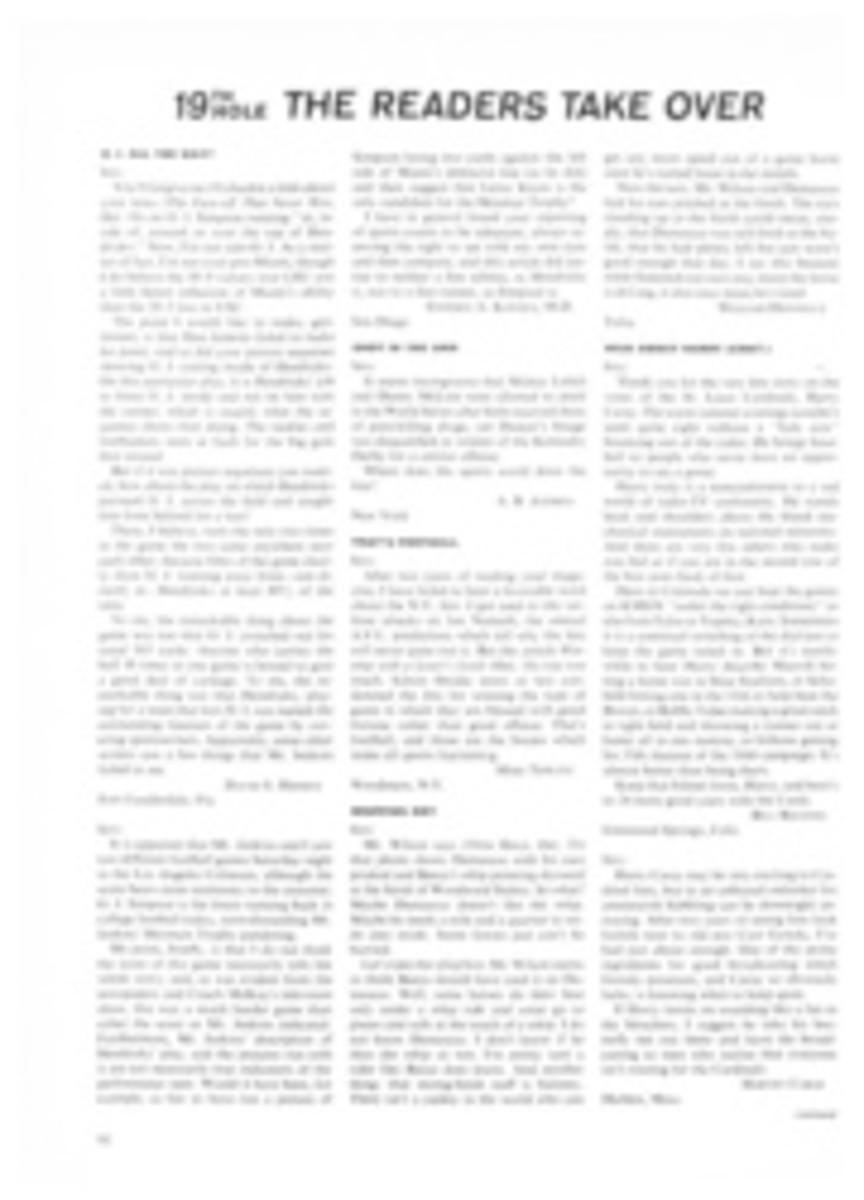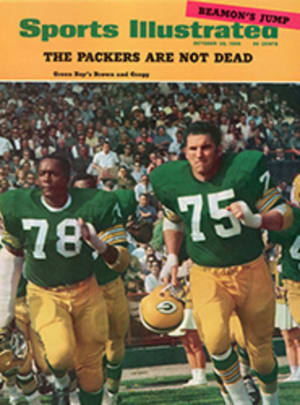
A show of their own for a versatile breed
The Morgan horse—that native breed so close to extinction some 30 years age—is certainly very much alive and well today, as indicated by the number that turned up recently for the All-Morgan show in Syracuse, N.Y. Begun only nine years ago with 95 horses, the event attracted 370 this year for three days of what seemed like nonstop competition. It was the kind of show that allowed little time for the customary exhibitors' parties—everyone was almost continuously in the ring, sometimes in an English saddle, other times in Western tack or in driving classes and often with the same horse. But, after all, versatility is what Morgans are famous for, and it is why owners like Mrs. Lyman Orcutt Jr. enjoy them so much.
Ruth Orcutt speaks from experience, generations worth. Her mother owned Morgans and her husband's father did, too. Both were directors of The Morgan Horse Club, so their children met at horse shows. "We Dicksons went out thinking we had to beat the Orcutts," Ruth said. Later she joined them when she married Lyman. Now their children show Morgans, as do her sister, Mrs. Roger Ela, her niece, Mrs. Barry Caisse, and Lyman's cousin, Dr. Robert Orcutt, a veterinarian. All were in Syracuse carrying on the families' Morgan tradition.
"We've been breeding Morgans for five generations," said Ruth. "Once my husband mentioned being in the business for 100 years, and someone said, 'But you don't look that old!' "
At the Orcland Farms in West Newbury, Mass. they run 45 or 50 horses, but several years ago, with visiting mares, the head count reached 95. Although the Orcutts are out at shows almost every weekend between April and the end of October, Ruth also manages to run a summer riding camp at home. The horses they show are often used for trail riding, and every once in a while, for old times sake, Ruth rides in the annual Vermont 100-mile event sponsored by the Green Mountain Horse Association. She and her mother participated in the first one 32 years ago.
At the shows, they naturally take a breeder's interest in the results. The first three winners in Syracuse, at the International Park Morgan Saddle Championship, were grandchildren of the Orcutts' sire Ulendon, who died two years ago at the age of 33. His last foal, now a 3-year-old mare named Helen of Troy, was the winner of the open pleasure-driving class and was driven by 19-year-old Louise Orcutt.
Ironically, one of the most famous of the Orcland horses is not of their own breeding. It is a gift horse named Johnny Appleseed. The Orcutts were given the stallion because he had the heaves and, since his bloodlines are totally undistinguished, they had him gelded. He became Louise's "playtoy" at home, and she taught him to do everything but pull a stone boat. Last year at the Morgan National Horse Show in Northampton, Mass.—the largest event for the breed—Johnny Appleseed set a record by winning more blue ribbons than had ever before been won at that show, a grand total of eight.
If the Orcutt family, relations and connections had a busy time, so did Fred and Jeanne Herrick. With eight of the Voorhis Farm Morgans they collected 10 blues, eight championships and four reserves. Like the Orcutts, Fred and Jeanne were brought together by a common interest in Morgans. Fred, a University of New Hampshire graduate, was initiated when he taught riding at a resort. He specialized and soon got a job with a Morgan stable. Jeanne, also from New Hampshire, had owned a few horses since she was 10. She started painting horses after graduation from the Rhode Island School of Design and was commissioned to do some Morgan portraits at the stable where Fred trained. They had never met, but were soon married and 13 years ago moved to Gordon Voorhis' Farm in Red Hook, N.Y. Voorhis, who started with six Morgans, now has over 60, and this has been the farm's most successful year. "The horses we're showing now are all homegrown," said Jeanne. "After all that work and worry it makes you feel like you must be doing something right."
One unfortunate incident marred an otherwise interesting show. According to the rules, a horse is not allowed to wear a shoe weighing more than 18 ounces in performance classes. It is a rather silly regulation, because the only time it is enforced is when a horse throws a shoe and it can be weighed. This happened in the very last class when, in fact, two horses cast shoes—Mr. and Mrs. Charles White's Westwold Dona Resa, with Dr. Robert Orcutt in the saddle, and A-Okay of Stonecroft Farm, ridden by John Lydon. Out came the scales, and Westwold Dona Resa was disqualified. Then A-Okay's shoe was tossed onto the scale and found to be two ounces over also. There were howls of anguish as A-Okay's trainer insisted that the shoe weighed in at the legal limit before it was put on the horse back home. He claimed, justifiably, that the pad could have picked up enough moisture to add the extra weight. In addition, as every weight-watcher knows, scales vary. But A-Okay, last year's high point winner, was shown the gate.
Since both these horses had been blue-ribbon winners, it meant not just disqualification from one class, but from the entire show, and representatives of management faced the task of collecting all the ribbons and money and redistributing the prizes. They may still be at it.

